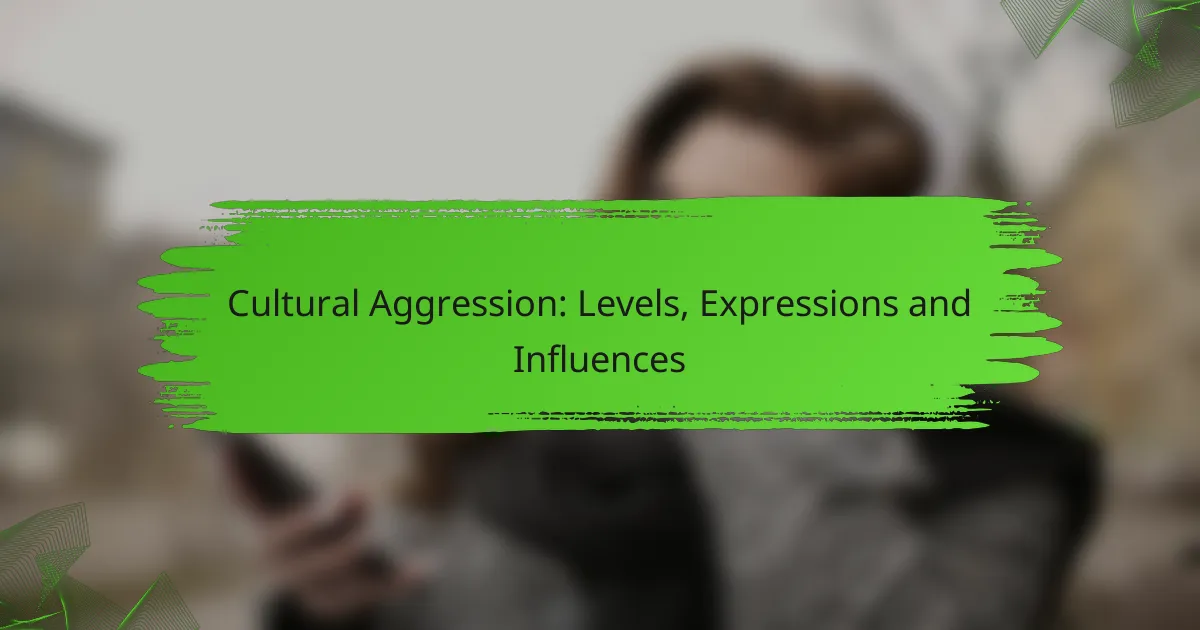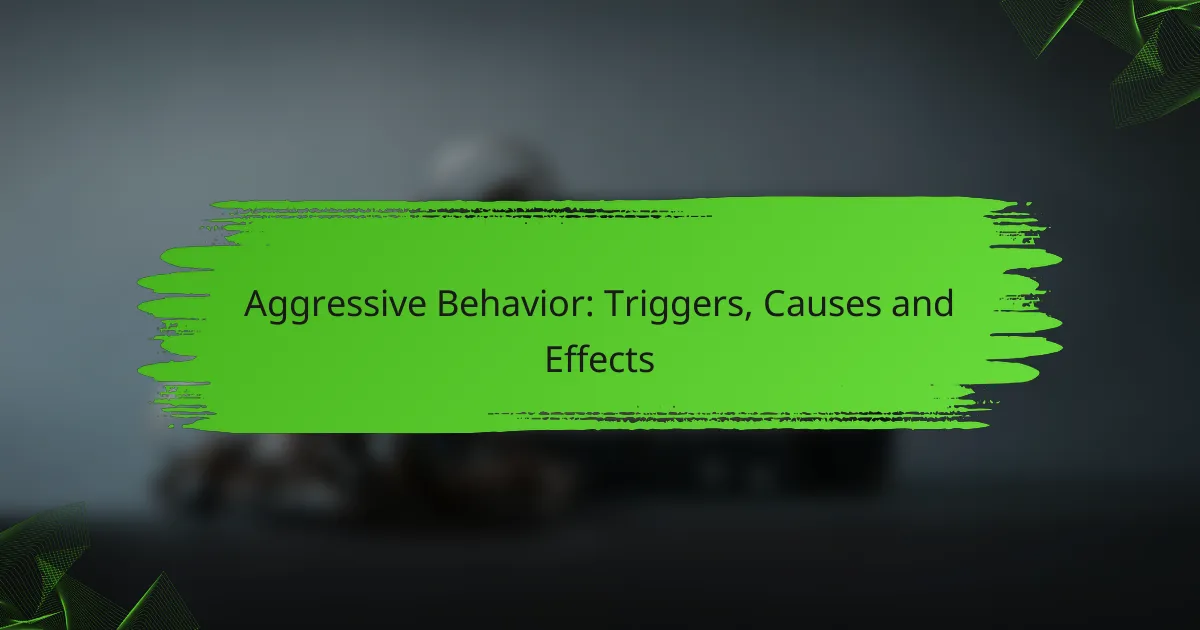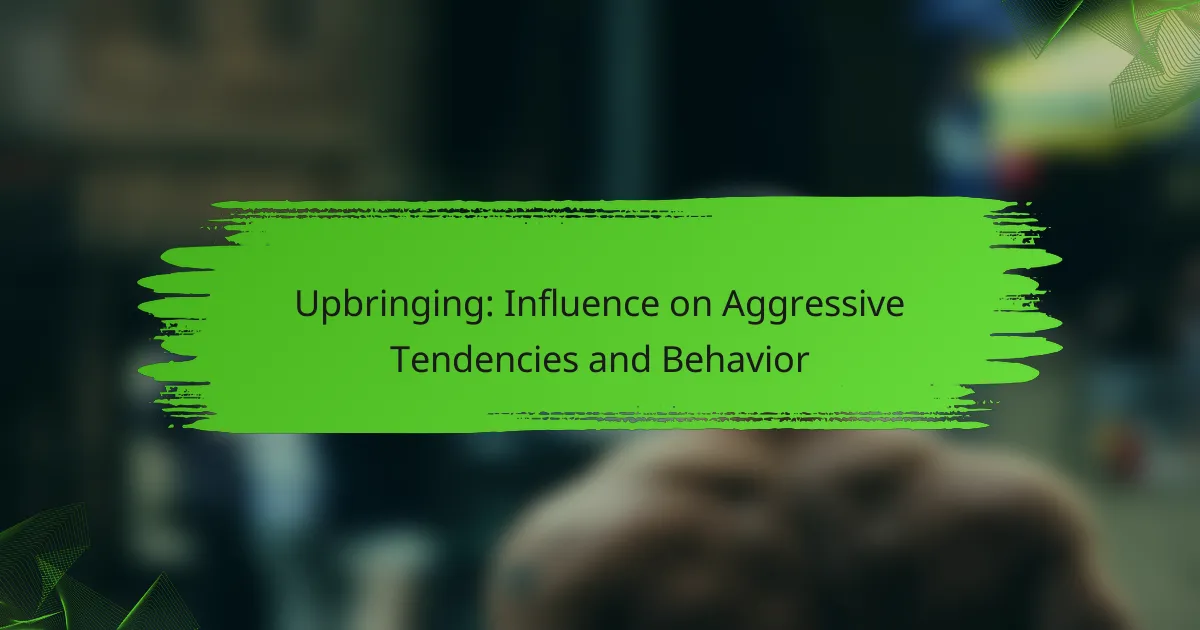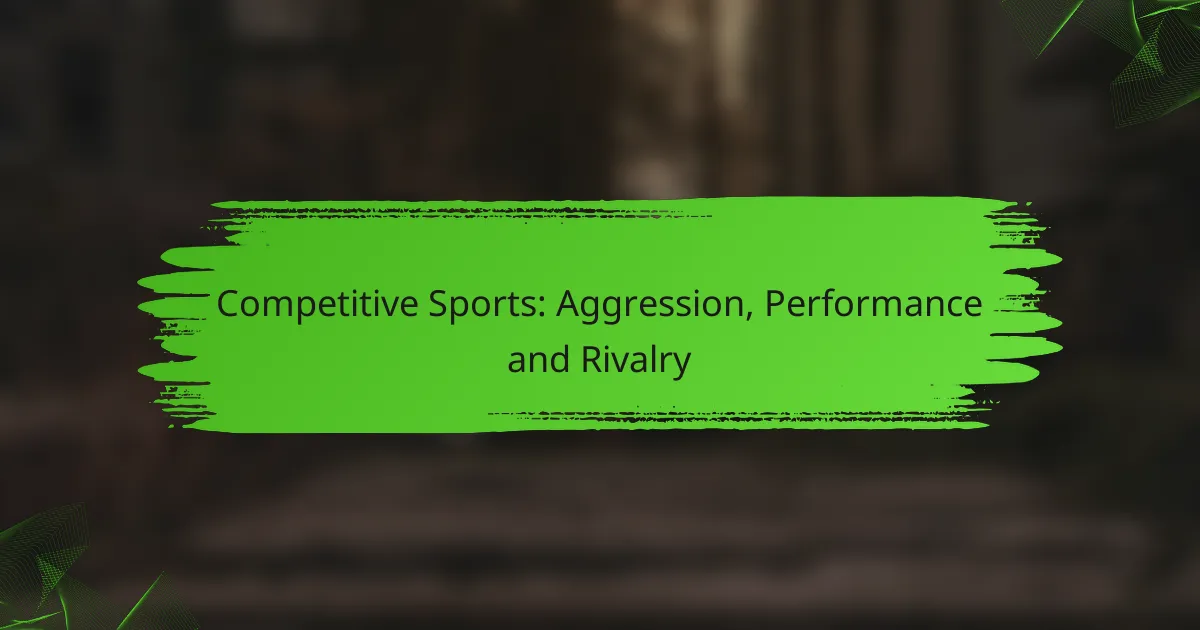Cultural aggression is a complex phenomenon that manifests through various expressions, often harming or undermining different cultural groups. It reflects underlying power dynamics and can occur at multiple levels, revealing the intricacies of cultural interactions and their impacts on communities. In urban environments, socioeconomic factors, media representation, and historical contexts significantly influence these aggressive behaviors, contributing to tensions among diverse populations.
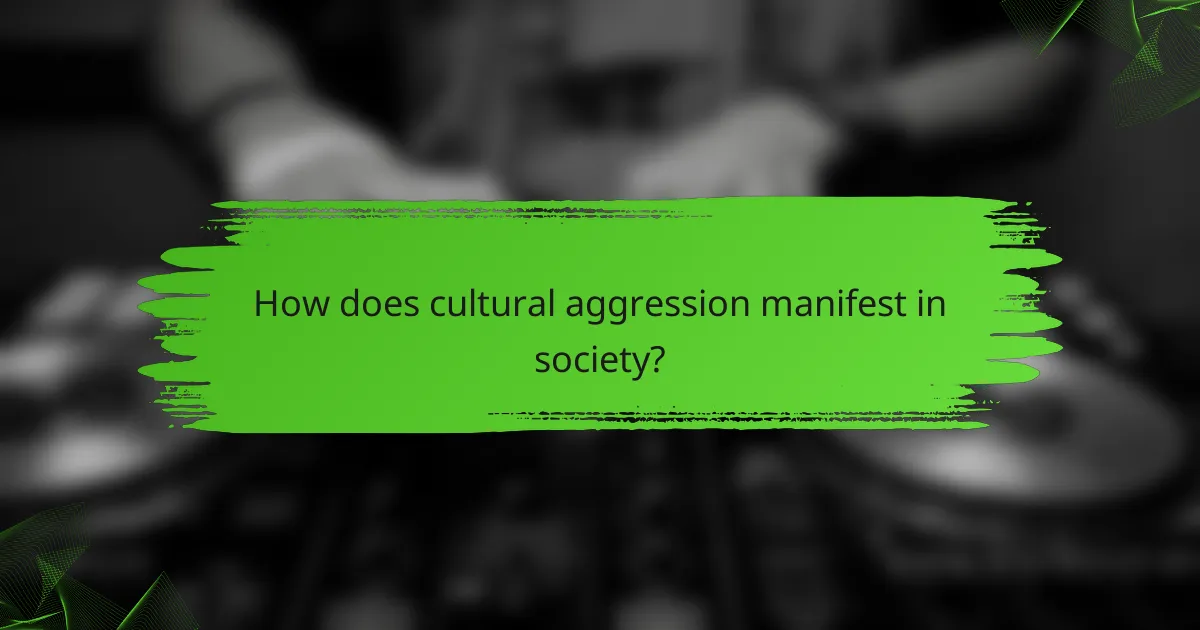
How does cultural aggression manifest in society?
Cultural aggression manifests in society through various forms of expression that can harm or undermine different cultural groups. It often reflects power dynamics and can be seen in verbal, non-verbal, and institutional behaviors that promote inequality or disrespect.
Verbal expressions of cultural aggression
Verbal expressions of cultural aggression include derogatory language, stereotypes, and dismissive comments aimed at specific cultural groups. These expressions can perpetuate negative perceptions and reinforce social hierarchies.
For instance, using slurs or making jokes that belittle a culture can create an environment of hostility. It’s crucial to recognize the impact of language and strive for respectful communication that acknowledges cultural diversity.
Non-verbal expressions of cultural aggression
Non-verbal expressions of cultural aggression encompass body language, gestures, and visual symbols that convey disrespect or hostility towards a culture. For example, mocking gestures or the display of culturally insensitive symbols can alienate individuals from their cultural identity.
Awareness of non-verbal cues is essential, as they can communicate messages just as powerfully as words. Engaging in culturally sensitive behaviors, such as avoiding offensive gestures, can foster a more inclusive atmosphere.
Institutional expressions of cultural aggression
Institutional expressions of cultural aggression occur within organizations and systems that uphold discriminatory practices or policies against certain cultural groups. This can include biased hiring practices, unequal access to resources, or educational curricula that overlook diverse perspectives.
To combat institutional cultural aggression, organizations should evaluate their policies and practices for inclusivity. Implementing diversity training and promoting equitable representation can help mitigate these aggressive expressions and support a more harmonious society.
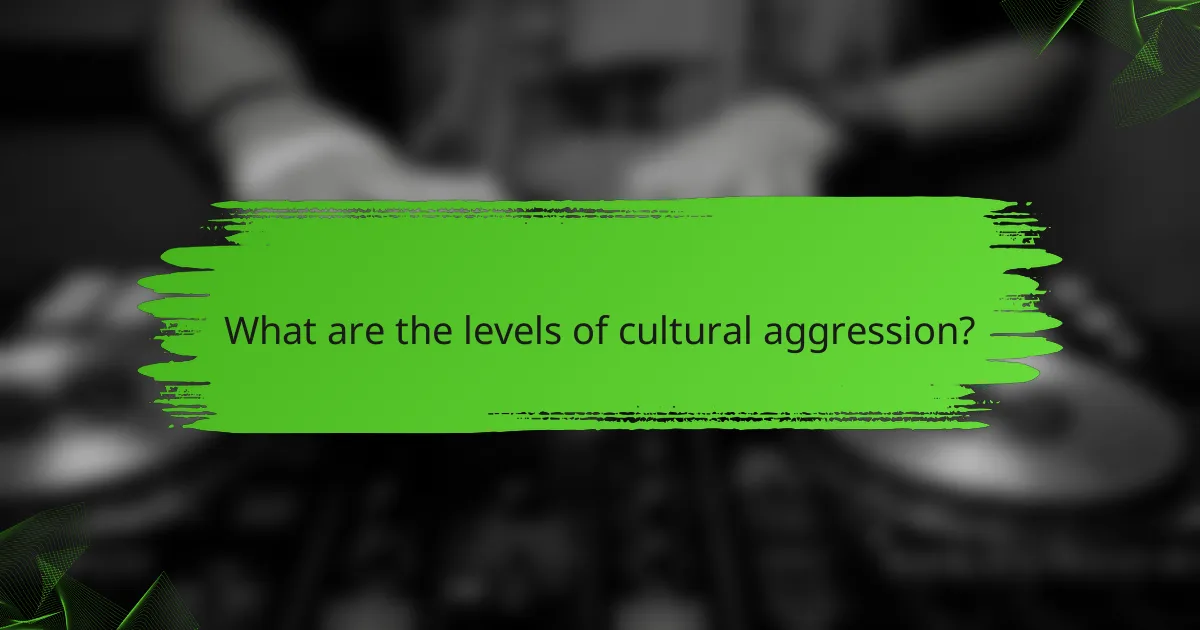
What are the levels of cultural aggression?
Cultural aggression occurs at various levels, each reflecting different contexts and intensities of cultural conflict. Understanding these levels helps in identifying the dynamics of cultural interactions and their potential impacts on communities.
Micro-level cultural aggression
Micro-level cultural aggression refers to individual acts of discrimination or bias that occur in everyday interactions. This can manifest through subtle behaviors such as microaggressions, which are often unintentional but can convey dismissive or derogatory messages to marginalized groups.
Examples include making assumptions about someone’s abilities based on their cultural background or using stereotypes in casual conversation. Recognizing these behaviors is crucial for fostering inclusive environments.
Meso-level cultural aggression
Meso-level cultural aggression involves group dynamics and institutional practices that perpetuate cultural biases. This can occur within organizations, schools, or communities where policies and norms may favor one culture over others, leading to systemic inequality.
For instance, a workplace that lacks diversity in leadership may unintentionally reinforce cultural aggression by not representing the perspectives of all employees. Addressing these issues requires a commitment to equitable practices and inclusive policies.
Macro-level cultural aggression
Macro-level cultural aggression encompasses broader societal and global patterns of cultural domination and oppression. This includes the influence of media, government policies, and historical narratives that shape public perception and treatment of different cultures.
Examples include the portrayal of certain cultures in news media or the impact of colonial histories on contemporary cultural relations. Combatting macro-level aggression involves advocating for cultural sensitivity and representation in all societal spheres.
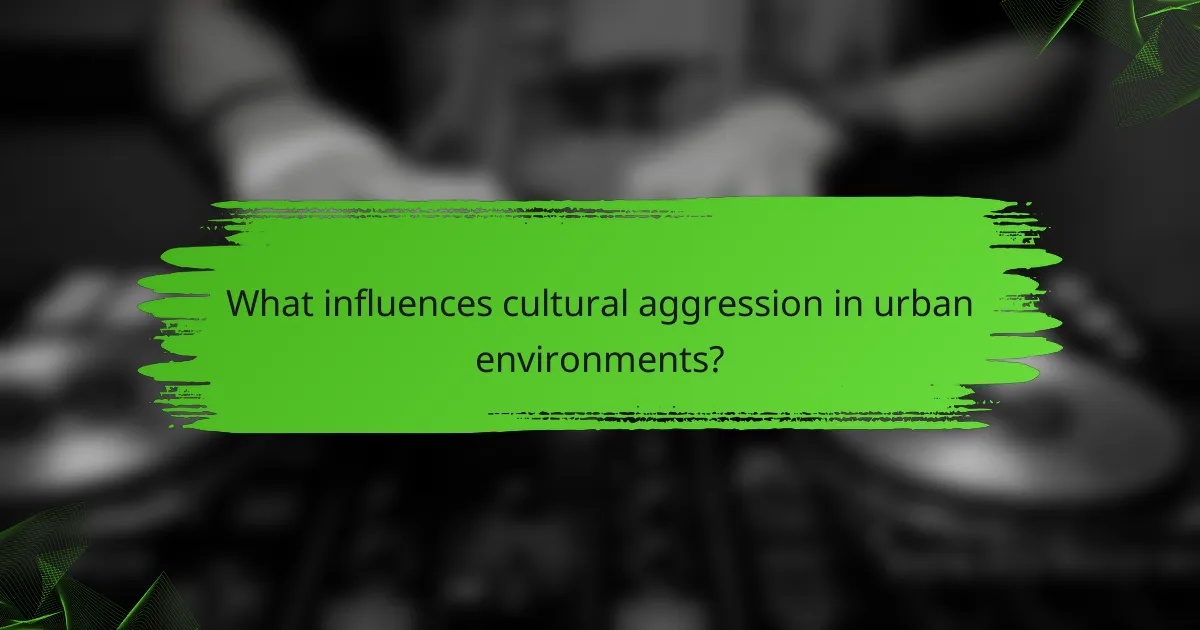
What influences cultural aggression in urban environments?
Cultural aggression in urban settings is influenced by a combination of socioeconomic factors, media representation, and historical context. These elements shape perceptions and interactions among diverse groups, often leading to tensions and conflicts.
Socioeconomic factors
Socioeconomic conditions play a significant role in cultural aggression. Areas with high poverty rates often experience increased competition for resources, which can exacerbate tensions between different cultural groups. For instance, limited access to education and employment opportunities can lead to frustration and hostility.
Additionally, income inequality within urban environments can foster resentment. Communities that feel marginalized or economically disadvantaged may express cultural aggression as a means of asserting their identity or grievances against perceived oppressors.
Media representation
Media representation significantly impacts cultural aggression by shaping public perceptions of different groups. Stereotypical portrayals in news and entertainment can reinforce negative biases, leading to misunderstandings and hostility. For example, frequent depictions of certain ethnic groups as criminals can fuel cultural aggression against those communities.
Moreover, social media amplifies these representations, allowing misinformation to spread rapidly. Urban residents may form opinions based on sensationalized content rather than personal experiences, which can escalate tensions and lead to cultural clashes.
Historical context
The historical context of urban environments heavily influences current cultural dynamics. Past injustices, such as segregation or colonialism, create long-lasting effects on intergroup relations. Communities with a history of oppression may harbor resentment that manifests as cultural aggression toward dominant groups.
Understanding this historical backdrop is crucial for addressing cultural aggression. Initiatives aimed at reconciliation and education can help mitigate these tensions by fostering dialogue and promoting mutual understanding among diverse urban populations.

How can communities address cultural aggression?
Communities can effectively address cultural aggression by fostering inclusive environments that promote understanding and respect among diverse groups. This involves implementing initiatives that encourage participation, education, and policy advocacy to combat negative cultural expressions.
Community engagement initiatives
Community engagement initiatives focus on bringing people together to share their cultural experiences and perspectives. These can include cultural festivals, workshops, and discussion forums that celebrate diversity and encourage dialogue. For example, organizing local events where different cultural groups showcase their traditions can foster mutual respect and understanding.
Additionally, forming community coalitions that include representatives from various cultural backgrounds can help identify specific issues related to cultural aggression and develop tailored solutions. Regular meetings and collaborative projects can strengthen community ties and promote a sense of belonging.
Education and awareness programs
Education and awareness programs aim to inform community members about the impacts of cultural aggression and the importance of cultural sensitivity. Schools and community centers can implement curricula that highlight the value of diversity and teach conflict resolution skills. Workshops on cultural competency can also be beneficial for local businesses and organizations.
Utilizing social media campaigns to spread awareness about cultural aggression can reach a wider audience. These campaigns can include testimonials, educational videos, and resources that encourage respectful interactions among community members.
Policy changes and advocacy
Policy changes and advocacy play a crucial role in addressing cultural aggression at a systemic level. Communities can advocate for policies that promote inclusivity and protect against discrimination based on cultural identity. This may involve lobbying for stronger anti-discrimination laws or funding for cultural programs.
Engaging with local government and stakeholders to create inclusive policies can help ensure that cultural diversity is respected and celebrated. Communities should monitor the implementation of these policies and hold leaders accountable to foster a supportive environment for all cultural groups.
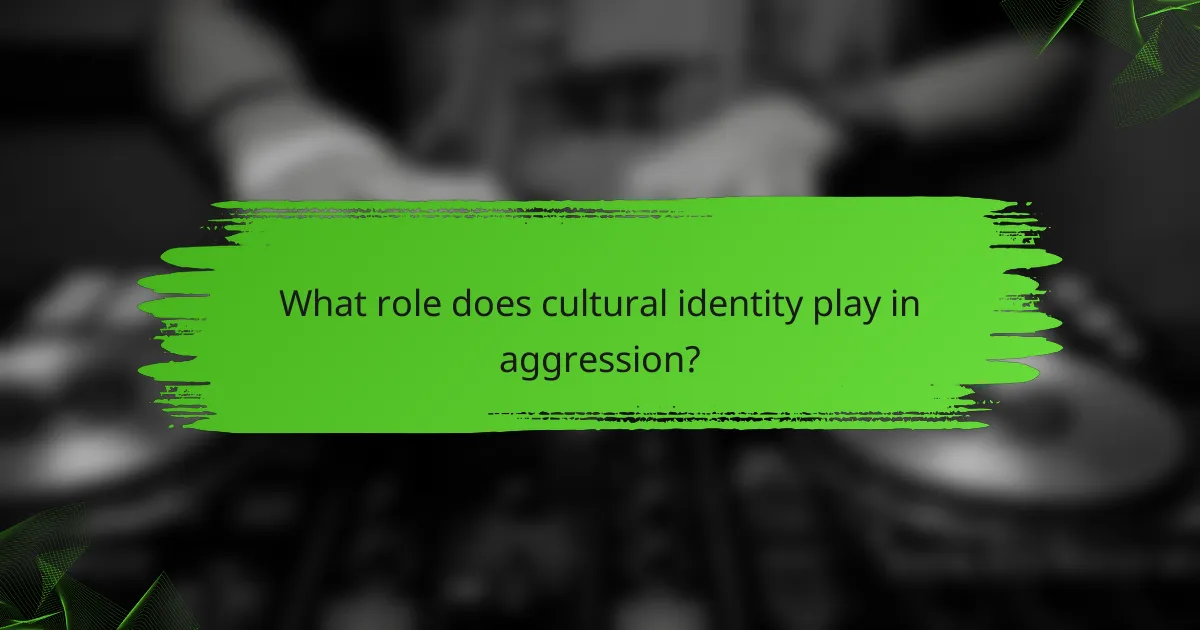
What role does cultural identity play in aggression?
Cultural identity significantly influences aggression by shaping individuals’ perceptions, behaviors, and responses in various contexts. It can dictate how aggression is expressed, perceived, and justified within different cultural frameworks.
Impact of cultural identity on perceptions
Cultural identity affects how individuals interpret aggressive behaviors. For instance, what one culture views as assertive communication may be seen as aggressive in another. Understanding these differences is crucial for effective cross-cultural interactions.
Moreover, individuals may perceive threats differently based on their cultural backgrounds. A person from a collectivist culture might view direct confrontation as a challenge to group harmony, while someone from an individualistic culture may see it as a necessary expression of personal rights.
Cultural identity and group dynamics
Cultural identity plays a vital role in shaping group dynamics, influencing how aggression is manifested within groups. Groups often develop norms around acceptable behavior, which can either mitigate or escalate aggressive actions. For example, in some cultures, group loyalty may encourage aggressive defense of group members.
Additionally, cultural identity can create in-group and out-group distinctions that heighten tensions. When individuals identify strongly with their cultural group, they may exhibit increased aggression towards perceived outsiders, often justified by cultural narratives or historical grievances.
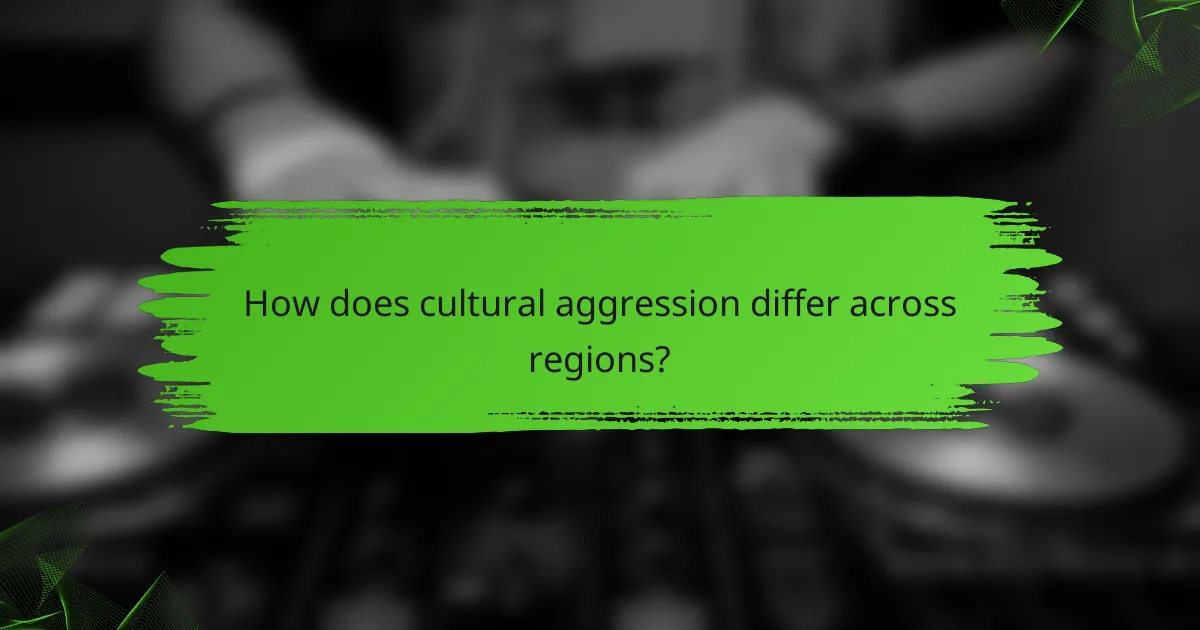
How does cultural aggression differ across regions?
Cultural aggression varies significantly across regions, influenced by historical, social, and economic factors. Understanding these differences is crucial for addressing conflicts and fostering intercultural dialogue.
Comparative analysis of cultural aggression in North America
In North America, cultural aggression often manifests through media representation and social discourse. Stereotypes and cultural appropriation can lead to tensions among diverse communities, particularly between Indigenous populations and mainstream society.
For instance, the portrayal of Native American culture in films and sports can perpetuate harmful stereotypes. This has sparked movements advocating for more respectful representation and the reclamation of cultural narratives.
Comparative analysis of cultural aggression in Europe
In Europe, cultural aggression is frequently tied to nationalism and immigration issues. Countries with significant immigrant populations may experience cultural clashes, leading to xenophobia and social unrest.
Examples include the rise of far-right political parties that promote anti-immigrant sentiments, which can escalate into aggressive cultural rhetoric. Addressing these issues requires promoting inclusivity and understanding among diverse cultural groups.
